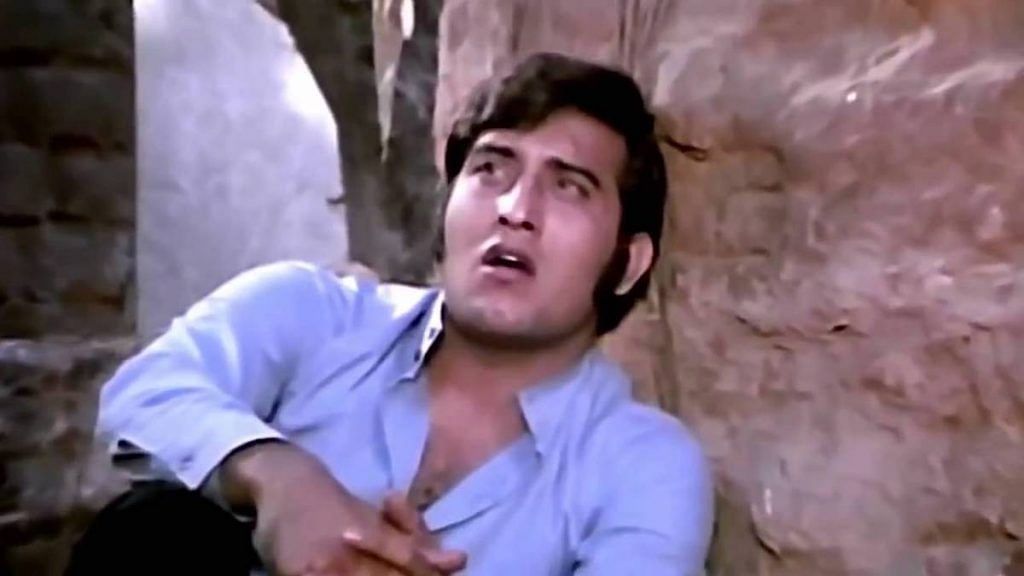In Mere Apne, Gulzar, still finding his feet as a maker after a long apprenticeship with Bimal Roy and Hrishikesh Mukherjee, weaves in poetry and angst.
India is facing a severe job crisis not seen since 1973, or so said a report this week based on NSSO numbers. In 1971, two years before the NSSO conducted its first similar job survey, writer Gulzar painted a picture of what jobless youth could look like in his directorial debut, Mere Apne.
Featuring two rival gangs, one led by a ‘dashing’ Vinod Khanna, playing Shyam, while the other one led by Shatrughan Sinha, as Chenu, Mere Apne stresses on the importance of gainful employment through violence that’s political in nature.
Also read: With 2019 elections approaching, Gulzar’s Aandhi is the film to watch again
Shyam and his ‘gang members’ while their time away in their Kydganj locality (an actual one in Allahabad), always on the lookout for the next ruckus they can cause. Pretending to be martyrs, slain by India’s then harsh economic reality, they sing satirical songs telling the world that college graduates deserved better.
“B.A. kiya hai, M.A. kiya
Lagata hai vo bhi ainvey kiya
Kaam nahi hai varna yahan
Aap ki dua se sab theek thaak hai”
https://www.youtube.com/watch?v=NykVp7qG_Ss
In a telling scene, they damage college infrastructure to vent their frustration, while one of the ‘protesting’ characters plays ‘Saare Jahan Se Achcha’ on a Harmonica — a classic Gulzar-ian touch.
The dramatisation of their conflict is achieved through the film’s central protagonist, Anandi Devi or Nani Ma (to Shyam and his group), played by Meena Kumari — the ailing actor in one of her last roles.
A woman living by herself in a small village, Anandi Devi is duped into moving to the city by a man, Arun (Ramesh Deo), looking to exploit her for labour.
The casting of Deo and Sumita Sanyal, who plays his wife, is meta (before the term came into existence in this context) because both featured in another memorable film from the same year, Hrishikesh Mukherjee’s much-loved Anand. In one scene, Arun plays the songs of Anand at his home. Anand’s posters also are plastered on the streets prominently in several scenes of Mere Apne.
Also read: Do Bigha Zamin, the Bimal Roy classic that Bollywood should look at now more than ever
Living with the memories of her late husband Niranjan (Deven Verma in a cameo), Anandi Devi is struck by the brutal and ruthless practicality of big city life once she moves. She cannot fathom how people can seek others out just for their own interests. Her great lament is that there’s no one she can call ‘her own’, the literal and metaphorical translation of ‘Mere Apne’.
Shyam shares her pain. His family doesn’t accept him for his wayward ways. He even lost his lover earlier over a cheap innuendo made by once-friend Chenu — which is how their rivalry began.
When Shyam sings ‘Koi Hota Jisko Apna’, a mournful song over a lost lover, his cries are heard by Anandi Devi who becomes a motherly figure to him, and his entire group of angry but kindhearted men.
The song too has a connect with Anand. It was part of the score composed by Choudhury for the climactic tragic sequence in Mukherjee’s film. The tune finds a song here, with a heartbreaking rendition by Kishore Kumar.
https://www.youtube.com/watch?v=DNZ8d0eBNJo
When Chenu and Shyam’s rivalry takes a brutal turn over a political campaign, the final blow is taken by Anandi Devi.
Gulzar uses the character of Anandi Devi to illustrate the hollow machismo of the young men and expose their vulnerability to reveal the fault lines of a country besieged with poverty.
Also read: Try watching ‘Satyakam’ in the age of post-truth, fake news and incorruptible leaders
While working a remake, although this writer doesn’t claim to have seen the original Bengali version, the director situates the film in a localised context — Allahabad had a history with socialist politics, the mainstay of the film. With a struggling economy in that decade, jobless youth were a common sight, especially in poor northern states like Uttar Pradesh. The popular art of the decade itself saw the depiction of angst over the years, most notably in the Angry Young Man films, and many other of Sinha and Khanna films too.
In Mere Apne, Gulzar, still finding his feet as a maker after a long apprenticeship with Bimal Roy and Mukherjee, weaves in poetry and angst. The images and characters he created, fortunately or unfortunately, are as pertinent today. But the youth of the day may not exactly want to hear that. The government either.
